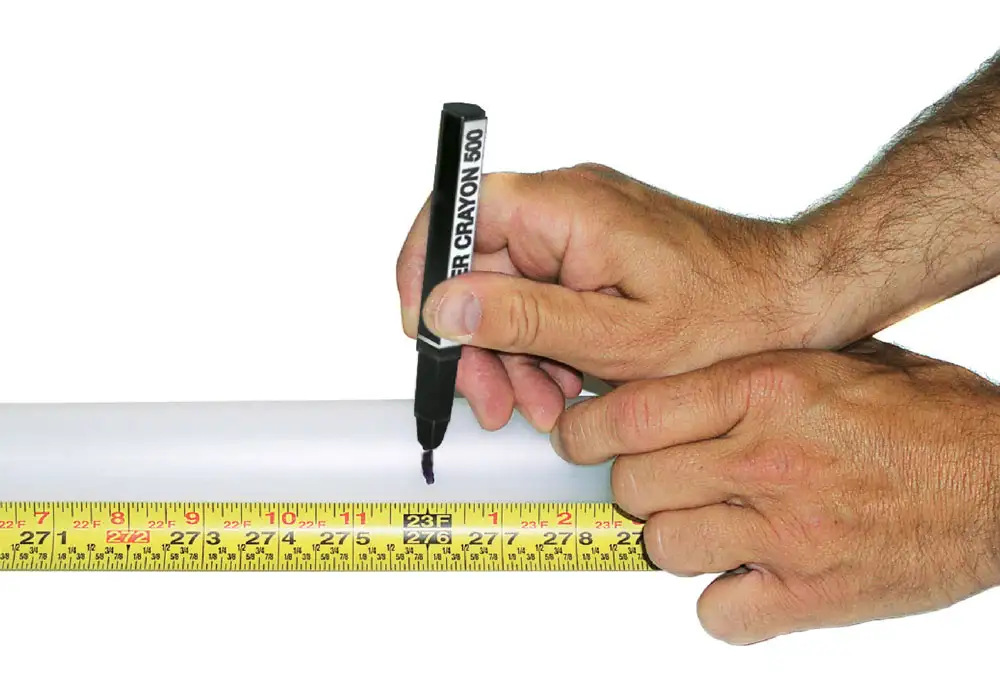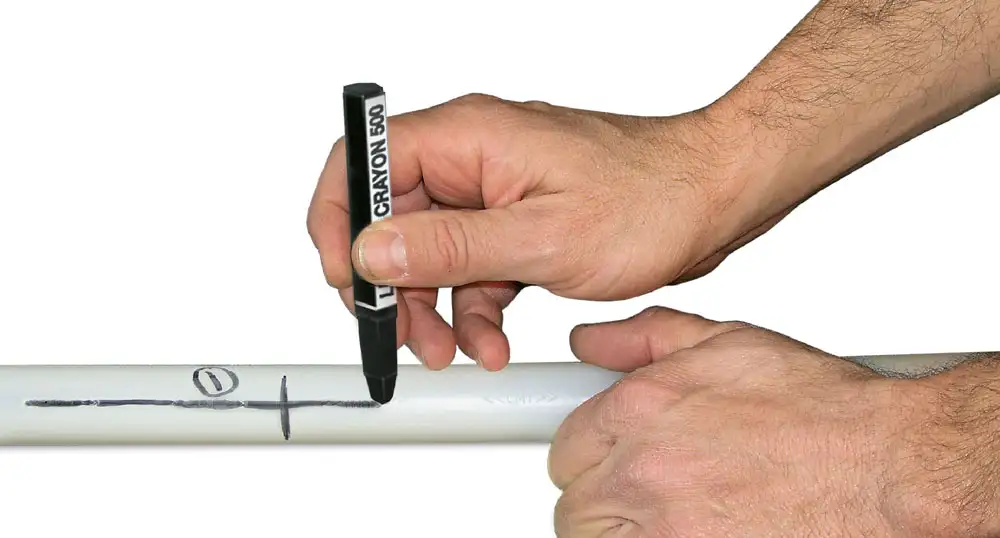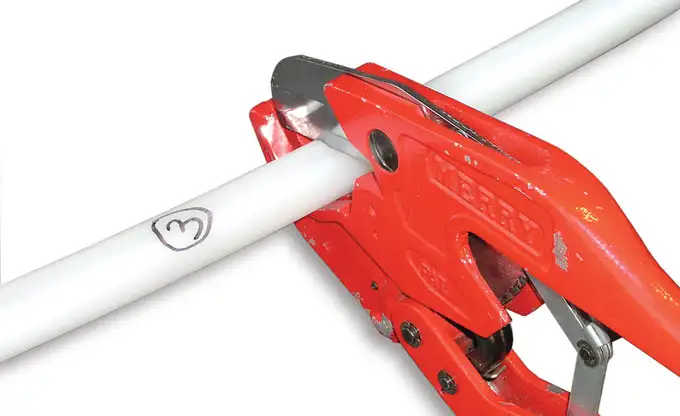Marking the CMT Tubing
Depth Discrete Groundwater Monitoring
Reduce Costs and Field Time
Step 1) Uncoil Tubing
Uncoil the CMT tubing on the ground or other flat surface. Stretch out a measuring tape at least as long as the depth of the well, next to the CMT tubing.
Note:
Newly uncoiled CMT tubing has a “memory” which can make it difficult to lay out straight. Sand bags help to hold down the ends of the tubing. The “memory” goes away relatively quickly, especially in warm weather. Placing the tubing on black plastic sheeting can warm the tubing, helping it straighten out more quickly.
Step 2) Indicate Ground Surface on Tubing
Allowing for your desired wellhead stick up (2-3 feet above ground surface), place the end of the measuring tape below the length of tubing you want above ground. This is your measuring point which represents ground surface and all depths below this point are depths below ground surface.
Step 3) Locate Channel 1 Identifier
The next step is to make marks on the CMT tubing at the depths corresponding to the midpoint of the desired monitoring ports. Before you do this, you will note that there is a faint “<< CMT >>” identifier that runs along the entire length of the CMT tubing opposite one of the 3 channels. This identifier facilitates identification of the 3 channels anywhere along the length of the tubing. The channel that has the faint identifier is always Channel 1. By convention, Channel 1corresponds to the shallowest monitoring zone. The other two channels are numbered clockwise as you are looking down on the completed well from above.
Note:
The Channel 1 identifier is a low profile repetitive marking << CMT >>
Step 4) Mark Monitoring Port 1
Make a mark across Channel 1 on the exterior of the CMT tubing at the depth corresponding to the center of the uppermost monitored port (Figure 3 which is 23 feet below ground surface in our hypothetical example in Table 1). A permanent marker or a “Chinamarker” wax pencil works well for this. Write “Port 1” on the CMT tubing about 6 inches above the mark.
Note:
The channel identifier on the CMT tubing is intentionally subtle to avoid being a conduit for vertical leakage.

Figure 3 – Marking the 3 Channel CMT Multichannel Tubing Sampling Zone
Step 5) Mark Port 1 for Port Cutting Guide
Next, draw a line along the Channel 1 << CMT >> identifier extending approximately 6″ above and 6″ below the depth mark (Figure 4). You will use this line (and other similar lines drawn at the other port depths) to index the Port Cutting Guide. This ensures that you cut holes only in the intended channels corresponding to the desired monitoring zones.

Figure 4 – Marking CMT 3 Channel Multichannel Tubing to cut out Sampling Ports
Note:
The next series of instructions use hand tools and materials that are sharp. Use proper protextive equipment. Work Safely.
Step 6) Mark all Ports and Cut Tubing at Deepest Port
The Port Cutting Guide has been indexed so that it always references the Channel 1 identifier when it is used to cut holes in the other two channels. Therefore make similar marks at the depths corresponding to the next two monitoring zones (i.e., 34 and 48 feet below ground surface). Make the marks identical to the ones you drew at Port 1. That is, draw the depth mark across Channel 1 in the center of the port and draw the longitudinal line along the Channel 1 << CMT >> identifier. Label these depth marks as Port 2 and Port 3, respectively about 6 inches above each mark. Finally, make a mark at the depth of the bottom of the well (at 49 ft., 1 ft. below the deepest port in our example). Cut the CMT tubing at this mark using a hacksaw, sharp knife, or PVC cutter (Figure 5).

Figure 5 – Cutting 3 Channel Narrow Diameter CMT Multilevel System Tubing
Step 7) Complete Design
The design of the well has now been transferred to the CMT tubing.
